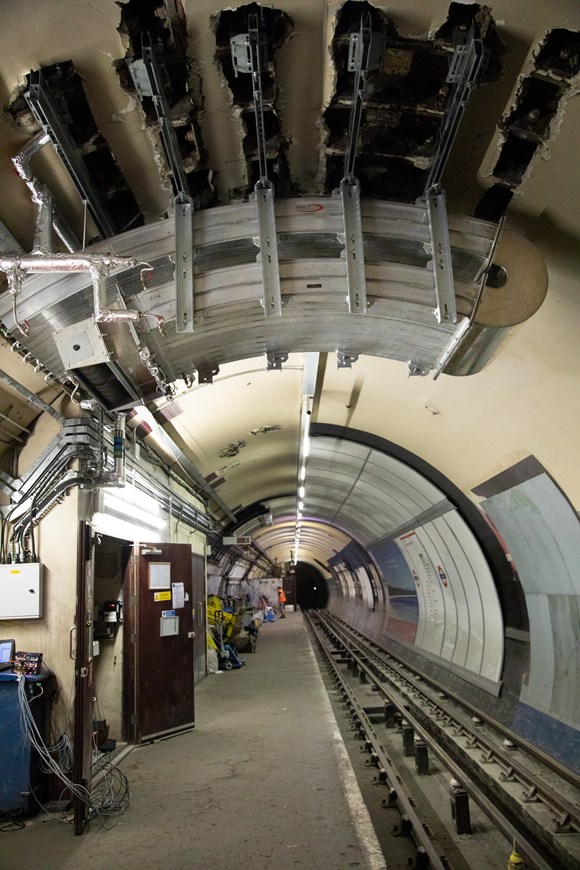Transport for London (TfL) is trailing a new cooling panel solution on a disused platform at Holborn Station, to test its suitability for reducing Tube Network temperatures
Earlier this week, the UK experienced its hottest temperatures on record. The cooling panel solution aims to provide cooler air to passengers waiting on platforms, as well as mitigating potential temperature increases associated with running an increased number of trains on the Piccadilly line, as part of the line’s future capacity upgrade.
The cooling panel works by circulating cold water around pipework within a curved metal structure to chill it. It then circulates air, using an industrial-sized fan, through gaps in the panel’s structure, which in turn is cooled.
The panel could also have the additional benefit of halving operational and maintenance costs, compared to existing technology used to manage temperatures on Tube lines.

The trial is part of the Government’s TIES Living Lab programme
The TIES Living Lab programme is a collaboration of 25 partners focusing on 10 infrastructure, data research and digital demonstrator projects.
The cooling panel project was 70 per cent funded by the Department for Transport and Innovate UK. The convection cooling system has been designed by TfL and developed by SRC Infrastructure, which also managed its build.
If the trial is successful, TfL will explore whether the panels are suitable for other deep Tube lines in the future
The Piccadilly line was chosen for this trial as when new, air-conditioned trains with walk-through carriages are introduced to the line from 2025, the current fleet will be gradually withdrawn from service and the frequency of trains in peak hours will rise from 24 to 27 trains per hour from mid-2027.
In the past, it has been difficult to lower temperatures on the deep Tube lines, as traditional cooling systems are expensive and difficult to install.
In recent tests on a prototype cooling panel in a lab environment, an air temperature reduction of 10-15 degrees in the vicinity of the panel was achieved.
Protecting TfL against future temperature increases
TfL’s project director for the Piccadilly Line Upgrade, Paul Judge, commented: “This innovative trial is taking place as we are experiencing record high temperatures.
“This new technology could play an important role in ensuring we are doing everything we can to protect TfL’s network against future temperature increases, helping to keep staff and customers safe and comfortable.
“The TIES Living Lab project has given us a great collaborative platform for sharing innovative ideas, data and good practice with a range of suppliers.
“The cooling panel project is supporting the Piccadilly Line Upgrade, which will see new state-of-the-art trains with more space, air-conditioning, walk-through carriages and improved accessibility running at greater frequencies on the line.”
He continued: “By seeking innovative solutions to cool platforms on the deep Tube network, we will be able to support future Piccadilly line train frequency increases with the possibility that the technology could be used on other Underground lines.”

















